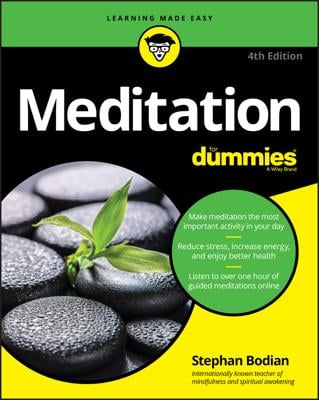Sitting in a certain posture and keeping your body relatively still for meditation mirrors back to you every impulse and distraction. You get to see how fidgety your body can be — and how hyperactive your mind can be, which is actually the source of your body’s restlessness.
For every plan or intention running through your mind, there’s a corresponding impulse in your muscles and skin. But you’ll never notice all this activity unless you sit still.
The funny thing is, you can sit in the same position for hours without noticing it when you’re happily engrossed in some favorite activity, like watching a movie or surfing the Net or working on a hobby.
But try to do something you find boring or unpleasant — especially an activity as strange and unfamiliar as turning your attention back on yourself and following your own breath or paying attention to your own sensations — and suddenly every minute can seem like an hour, every ache can seem like an ailment of life-threatening proportions, and every item on your to-do list can take on irresistible urgency.
Keeping still also gives you a tremendous edge when you’re working on developing your concentration. The fewer physical distractions you have, the easier it becomes to follow your breath, practice your mantra — or whatever your meditation happens to be.
These sitting instructions aren’t intended to turn your body into a stone. The point is to set your intention to sit still and notice what happens. The Buddha liked to use the metaphor of a lute: If the strings are too loose, you can’t play it, and if they’re too tight, they’ll break!
If you’re too rigid with yourself, you’ll just end up miserable. But if you keep shifting your body this way and that, you’ll never get your mind concentrated and quiet enough to reap the benefits of meditation.

